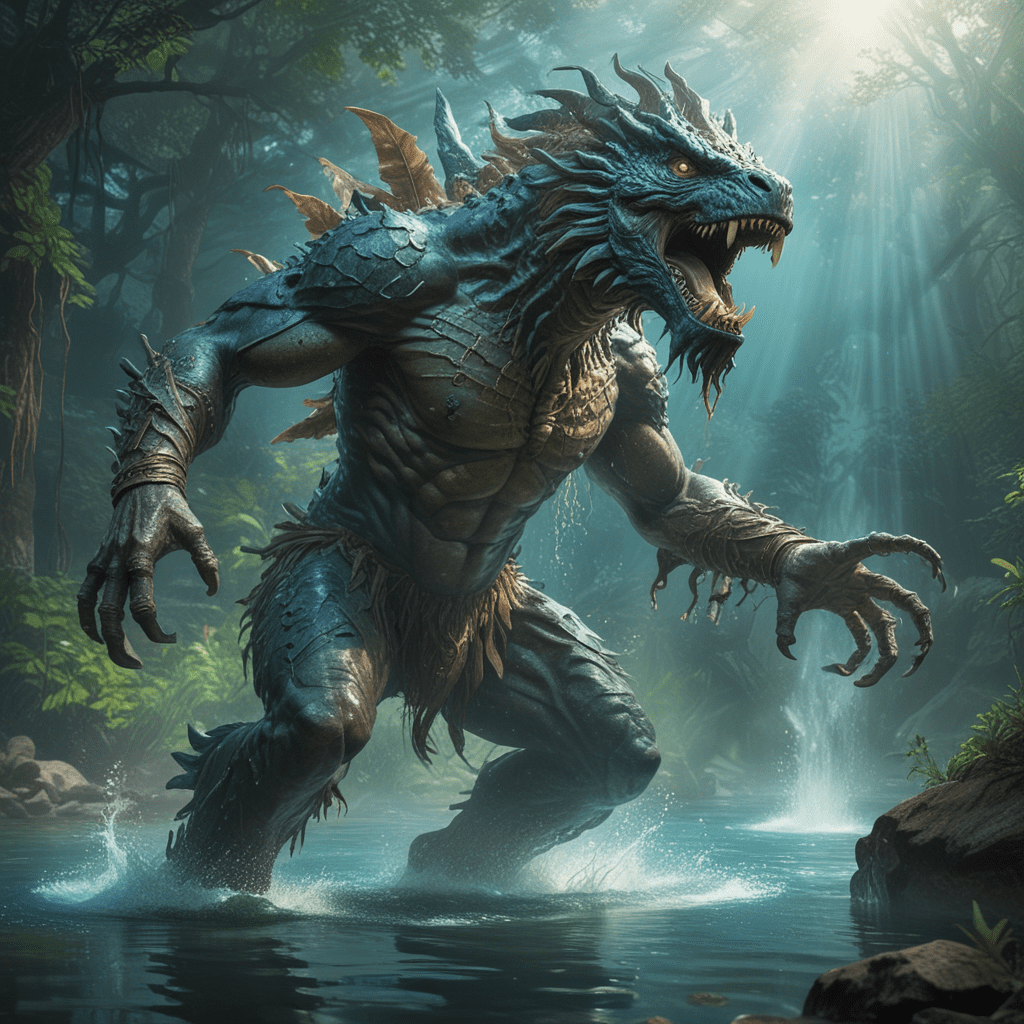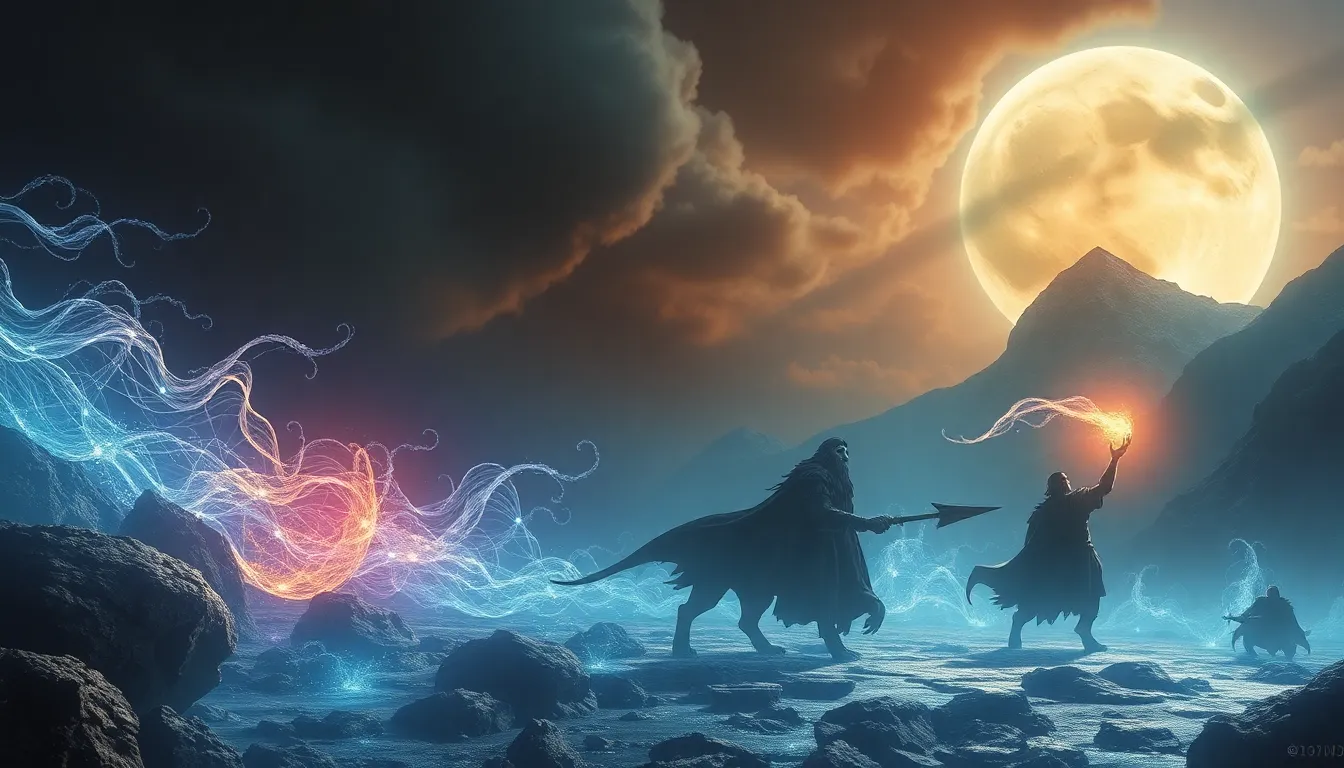The Legend of the Water Monster in Native American Mythology
I. Introduction
Water monsters, enigmatic creatures that lurk beneath the surface of lakes, rivers, and oceans, have captivated human imagination for centuries. In the realm of Native American mythology, these aquatic beings play a pivotal role, symbolizing both the power and the perils of the natural world. From the thunderous Thunderbird to the serpentine Water Serpent, each tribe's lore weaves a unique tapestry of fear, reverence, and respect for these enigmatic guardians of the waters.
II. Origins and Variations
The origins of water monsters in Native American mythology are as diverse as the tribes themselves. Some legends trace their lineage to ancient spirits, while others depict them as manifestations of natural forces, such as storms or floods. The specific characteristics and behaviors of these creatures vary significantly depending on the tribe and region, reflecting the vast array of aquatic environments and cultural beliefs found across North America.
III. Physical Characteristics
Water monsters in Native American mythology are often described as colossal, with some legends depicting them as large as mountains or even capable of swallowing entire villages. Their appearance can vary widely, from serpentine forms with gleaming scales to monstrous fish with razor-sharp teeth and glowing eyes. Some water monsters possess the ability to control the weather or manipulate the water around them, using their powers to create storms or cause floods. Despite their fearsome reputation, some water monsters are also depicted as wise and benevolent beings, serving as guardians of water resources and protectors of the natural world.
VI. Specific Legends from Different Tribes
The legend of the water monster is deeply ingrained in the mythology of various Native American tribes, each with its unique variations. One prominent example is the Thunderbird, a powerful mythical creature found in Algonquian and Plains Indian lore. Depicted as a giant bird with the ability to control lightning and thunder, the Thunderbird is often associated with water monsters, engaging in epic battles to protect the skies and waterways. Another notable legend is that of the Navajo Water Serpent, a benevolent being that presides over water resources and ensures the well-being of the tribe.
VII. Modern Interpretations
In contemporary times, the legend of the water monster continues to resonate with Native American communities. While some interpretations view these creatures as purely mythical, others draw connections to real-life aquatic phenomena. For instance, certain water monsters are believed to be symbolic representations of giant catfish or prehistoric reptiles that once inhabited Native American territories. These modern interpretations serve as a reminder of the deep reverence and respect Native American cultures have for the natural world.
VIII. Social and Cultural Significance
Water monsters in Native American mythology embody a complex interplay of fear and fascination. They represent the untamed forces of nature, capable of bringing both destruction and life-giving sustenance. Through stories and legends, these creatures serve as cautionary tales about the importance of respecting water resources and maintaining balance with the natural world. Additionally, water monsters often play a central role in tribal ceremonies and rituals, symbolizing the interconnectedness of all living beings and the power of water to cleanse and purify.
IX. Environmental Implications
The legend of the water monster carries significant environmental implications, reflecting the deep understanding Native American cultures have of the delicate balance of ecosystems. Water monsters are often depicted as guardians of water resources, highlighting the importance of preserving and protecting these vital sources of life. By embodying the interconnectedness of all things, these legends underscore the need for responsible stewardship of the environment and emphasize the consequences of human actions on the natural world.
X. Conclusion
The legend of the water monster in Native American mythology stands as a testament to the rich cultural heritage and spiritual beliefs of indigenous communities. These enigmatic creatures, with their awe-inspiring power and enigmatic nature, have captivated generations through stories and legends. By embodying the untamed forces of nature, water monsters serve as reminders of the importance of respecting the natural world and maintaining balance within it. As guardians of water resources and symbols of interconnectedness, these legends continue to inspire and guide Native American communities, emphasizing the profound relationship between humans and the environment.
FAQ
Q: Are water monsters in Native American mythology real?
A: The existence of water monsters in a physical sense is not supported by scientific evidence. However, these creatures hold deep cultural and spiritual significance in Native American mythology, embodying natural forces and serving as cautionary tales about respecting water resources.
Q: Why are water monsters often depicted as fearsome creatures?
A: Water monsters in Native American mythology often represent the untamed and unpredictable forces of nature. Their fearsome appearance and behavior reflect the respect and caution with which Native American cultures approach powerful natural phenomena.
Q: What is the significance of water monsters in Native American ceremonies and rituals?
A: Water monsters play a central role in many Native American ceremonies and rituals, symbolizing the interconnectedness of all living beings and the power of water to cleanse and purify. They serve as reminders of the importance of maintaining balance with the natural world and honoring the sacredness of water resources.



